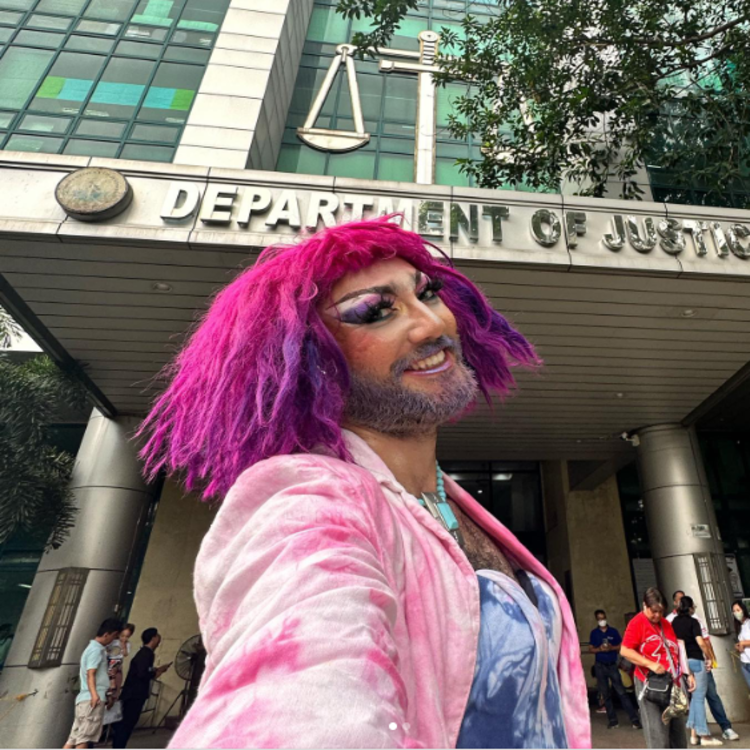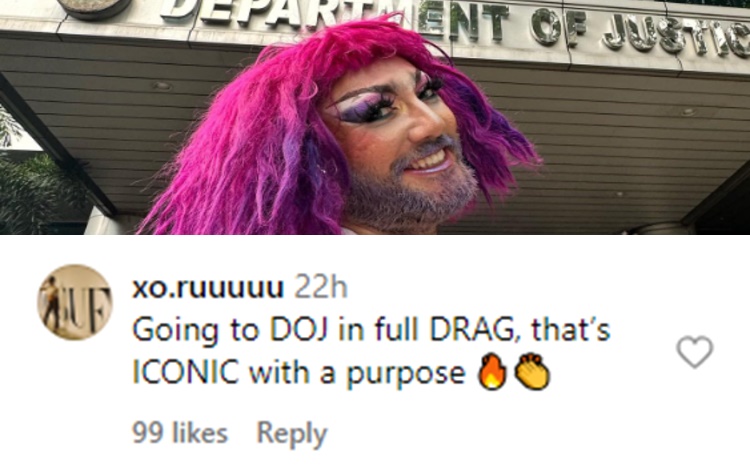A netizen referred to Pura Luka Vega’s visit to the Department of Justice in Quezon City wearing a full drag queen costume as “iconic with a purpose.” Most people are aware of the legal cases Pura Luka Vega is facing following her controversial performance of “Ama Namin” where she wore a Nazareno-inspired outfit and danced to a remix of the Lord’s Prayer, a song from the Church that she believes is a prayer taught by Jesus Christ.

Pura also engaged in activities that were considered inappropriate, such as her mukbang (eating show) featuring the Ostia, a sacred bread used in the Holy Communion, as well as a video where she dressed as the Nazareno, appearing as if she were a wanderer seeking shelter. These actions could be interpreted differently by some as part of her persona as a drag queen, but others find them unacceptable and blasphemous in Catholic belief and towards the Lord.

These actions led to the declaration of Pura as persona non grata in many places in the Philippines, and more may follow suit. What does persona non grata mean? It signifies that Pura is considered an unacceptable or unwelcome person in these declared areas, and she is not allowed to enter them.
Yesterday, Pura went to the Hall of Justice in Quezon City, and based on her post, it may have been related to a hearing for one of her cases connected to her “Ama Namin” performance. A netizen praised her for attending the hearing in full-drag attire, calling her “iconic with a purpose.” It’s worth noting that government offices usually have strict dress codes, and individuals need to be in formal attire to enter. Some netizens may view Pura’s ability to enter the Hall of Justice in such attire as a remarkable achievement, or perhaps her choice of attire was her way of representing herself as a drag queen.

Whatever the outcome may be, we will continue to follow the developments of these events.

